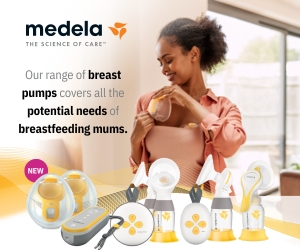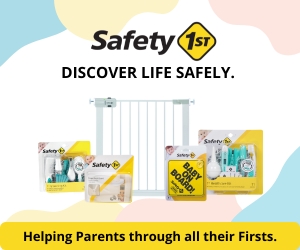In the past, people with blood cancer’s only hope of a cure was getting a stem cell or bone marrow transplant from a donor, which is called an allogeneic transplant. These patients needed a matched donor, thus the recipient and donor had to have the same immunologic proteins, called HLA. If not a match, the donor cells would attack the recipient’s immune system.
Over the past few decades, substantial progress has been made in learning how to perform transplants using donated cells that aren’t a perfect match. Only 25% of people that require an allogeneic transplant, will have a sibling that is a match and 75% will need to find a match elsewhere. However, for southern European, Asian, African, Hispanic, Middle Eastern, or mixed ancestries people, it is often difficult to find a match. Where there is no sibling match for these people, patients can benefit from finding a cord blood match. This is where cord blood from a healthy newborn baby is used in the transplant.
The following examples illustrate the incredible progress made with cord blood transplants:
- In May 2023, Duke University of Medicine published an article about the increased use of cord blood transplants in adults. Dr. Edwin Alyea, Chief Medical Officer stated that”. “More patients can benefit from transplants now because there are more donor options.”
- In September 2022, the Memorial Sloan Kettering Cancer Centre published an article about how cord blood transplants have saved lives in patients with Leukemia, Lymphoma, and Myeloma.
- Kirsten Riemer, age 41 of African American and Creole descent, was diagnosed with acute myeloid leukaemia in 2016; and received a cord blood transplant in 2016. She is still disease-free after 7 years.
- Ali Abouzari, age 67 of Persian descent, was diagnosed with acute myeloid leukemia in 2009; and received a cord blood transplant in 2010.
- Stuart Apfel, age 63 of Ashkenazi (Eastern European) Jewish descent, was diagnosed with acute lymphoblastic leukemia in 2017; and received a cord blood transplant in 2018.
- Donamarie Gerardi, age 52 of Southern Italian descent, was diagnosed with diffuse large B cell lymphoma and chronic lymphocytic leukemia in 2001; and received a cord blood transplant in 2006.
- Wincheng Lin, age 41 of Chinese descent, was diagnosed with acute leukemia in 2006; and received a cord blood transplant in 2009.
- Keelly Nieves, age 41 of Colombian descent, was diagnosed with myelodysplastic syndrome in 2020; and received a cord blood transplant in 2020.
- Ankit Sundaram, age 33 of Indian descent was diagnosed with acute myeloid leukemia in 2019; and received a cord blood transplant in 2019.
All these above patients have survived their cancer and are still disease-free today and living normal lives. To this day, nearly 400 adults and children have received cord blood transplants at Memorial Sloan Kettering, of these more than 50% were from non-European ancestry.
The major benefits of a cord blood transplant are:
The cord blood stem cells do not have to be a perfect match and can be transplanted without harm since a baby’s immune system is less developed and therefore less likely to recognize the patient’s body as foreign. The cord blood stem cells can help stop the cancer from returning after the transplant and are also excellent at combating cancer. The patients are also less likely to have the potentially life-threatening complication called graft versus host disease (GVHD). The stem cells are also immediately available for an urgent transplant, as they are already cryopreserved once a match is found.
Given that there are relatively few stem cells in each unit, and the time for the stem cells to settle and start producing blood cells is longer; a way to overcome this is with a new technology called “expansion”. This technology replicates these blood cells in the laboratory before being used in a transplant. Through clinical trials, Duke University has shown that using expansion shortens the time for the stem cells to settle and start producing blood cells from 28 to 12 days. This is much faster than any other transplant technique available. This product, called Omdidubicel, was approved by the Food and Drug Administration (FDA) in April 2023. This means that many more patients will now have access to the therapy.
Another option to make cord blood transplants available for more people is to do a haplo-identical cord transplant. This involves a combination of donated cord blood stem cells and half-matched (haploidentical) cells from a related half-matched adult donor, typically a parent, child, or sibling. Medication given after the transplant, dampens the immune response among the newly transplanted cells to discourage graft versus host disease.
Another way to make cord blood transplants available to patients that cannot endure high-dose chemotherapy before a transplant is to allow low-dose chemotherapy before the transplant, for it was found in these instances that the transplanted cord blood can recognize and kill cancer cells that were not eliminated by the chemotherapy.
Today, more than 50,000 of these transplants have been performed worldwide.
Cord blood even contains rare stem and progenitor cells for tissues that are different from the blood. Scientists are studying the likelihood that cord blood cells could be used to repair damaged tissues including those in the heart, brain and pancreas. To quote from an article in Diabetologica in 2011: “By implication, it appears that the stem cells in cord blood may hold more promise for the formation of pancreatic beta cells than those in bone marrow”.
With all of these developments in regenerative medicine, it would be a great investment in a family’s future for parents to make the choice to bank their baby’s umbilical cord- and tissue stem cells at birth.
References
- Gupta AO, Wagner JE. Umbilical Cord Blood Transplants: Current Status and Evolving Therapies. Front Pediatr. 2020 Oct 2;8:570282. doi: 10.3389/fped.2020.570282. PMID: 33123504; PMCID: PMC7567024.
- https://medschool.duke.edu/stories/more-options-people-blood-cancers
- https://www.mskcc.org/news/how-msks-cord-blood-transplant-program-has-saved-lives
- Huang, C.J., Butler, A.E., Moran, A. et al. A low frequency of pancreatic islet insulin-expressing cells derived from cord blood stem cell allografts in humans. Diabetologia 54, 1066–1074 (2011). https://doi.org/10.1007/s00125-011-2071-2
















Cancer is a very scary disease,what makes it worse is running around a long waiting of finding donors that will match.This cyrosave will really save many people’s lives.